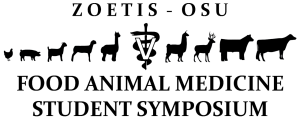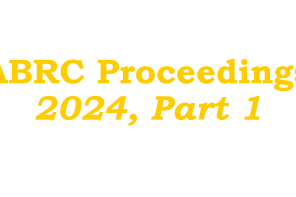By: Jay Evans
Good Bug, Bad Bug
As I finish this column on Super Bowl Sunday I am reminded of a sarcastic comment used to describe the game of soccer in the U.S. “Soccer is the game of the future . . . and it always will be.” As a longtime soccer dad, I am ever hopeful that the world’s game will reach its proper place at the top of local sports. I am not holding my breath and nor, apparently, is the rest of the country. The same might be said for probiotics. In human health and agriculture, probiotic treatments have received much attention over the years, leading to substantial research and development as well as commercial products. As a USDA employee, I cannot endorse or condemn the available commercial products, but I would like to discuss two research studies that provide new insights for the promising field of probiotics.
Both studies, one in Italy and one in the U.S., tested the impacts of bacteria found in the honey bee gut on levels of the honey bee parasite Nosema ceranae. In Italy, Loredana Baffoni and colleagues isolated and cultivated six lactic-acid bacteria found in honey bee guts (their paper is available at: DOI: 10.3920/BM2015.0085). They then combined these into a bacterial cocktail that was handfed to newly emerged honey bee workers. These bees were contained in relatively sterile cages in the laboratory. Five days later, half of the bees were handfed an infective dose of N. ceranae spores in sugar water while half were given sugar water alone. Bees that had received the bacterial mix prior to being exposed to nosema spores had significantly lower nosema loads than did control bees raised on sugar water alone. When bees were not fed nosema spores, those bees harboring nosema infections naturally also tended to have fewer spores when they had been primed with the bacterial cocktail, although this result was not statistically significant. Finally, in all sets there was substantial variation in nosema spore loads that was not explained by the probiotic treatment. These promising results deserve field tests in an apiary.
Vanessa Corby-Harris and colleagues at the USDA’s Carl Hayden Honey Bee Research Center in Tucson have described an additional candidate for a bacterium that has positive effects on bee health (10.1093/jee/tow012). Parasaccharibacter apium is found in both larval and adult bees. These researchers cultured an isolate of P. apium taken from bee larvae, and then set out to determine its impact on bee disease and bee health. Importantly, they first confirmed that this bacterium would remain viable when mixed into pollen patties under hive temperatures. Live bacteria survived well for at least 24 hours, arguably enough time to be consumed by bees in the hive. In addition, larvae from hives sustained with bacteria-rich pollen patties held more live bacteria than did larvae from hives with control pollen patties. They then tested the impacts of P. apium on nosema disease. Newly emerged bees from hives fed P. apium patties and bees from control hives were again handfed Nosema ceranae spores. After these bees were maintained in sterile cages for 10 days, bees from P. apium colonies showed lower nosema loads than did bees from control colonies. While the results await field trials, P. apium shows great promise as a ‘good’ bug. A similar study carried out by Ryan Schwarz, now at Fort Lewis College in Colorado, provides a sobering reminder of the need to get outside more. Working with Nancy Moran at the University of Texas and myself, Ryan showed a substantial decrease in levels of the gut parasite Lotmaria passim when bees were primed with the gut bacterium Snodgrassella alvi – at least when experiments were carried out in sterile cups. Unfortunately, just the opposite occurred when those same bees were marked and released into colonies (10.1073/pnas.1606631113). Inspired that it is at least possible to permanently tweak the gut microbes in bees through probiotics, Ryan and others are hot on the trail to find bacteria that have a positive impact in the field.
For those interested in a fresh take on the impacts, limits, and promise of gut microbes for human health (including when and how to eat a restorative poop sandwich), science writer Ed Yong has just written an entertaining book (“I Contain Multitudes: The Microbes Within Us And A Grander View Of Life”). The similarities and challenges for human and agricultural probiotics are striking, from clear benefits in some cases to less exciting results elsewhere. I, for one, remain optimistic that a science-based approach to developing probiotics will lead to more products that improve honey bee health. Then again, I missed the end of what I hear was a decent Super Bowl after going to bed with dreams of soccer greatness.










